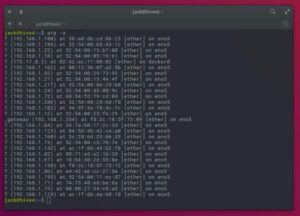The TIOBE monthly index of programming language popularity is a snapshot into the development world, and July’s biggest surprise is the ranking of R.

Image: Getty Images/iStockphoto
A monthly index of popular programming languages found that statistical programming language R is quickly gaining on Python, and several other languages have made significant jumps in popularity since the same time last year.
Compiled by software QA automation company TIOBE, the monthly list ranks programming languages by popularity based on the number of search engine hits each language returns. TIOBE states that the index “is not about the best programming language or the language in which most lines of code have been written,” only which is currently trending the highest on various search engines around the world.
The biggest surprise on the July index is the surge in popularity of the R programming language, which is commonly used in statistical and big data applications. R rose one space to eighth place in July, but its comparison to 2019 is where the real surprise lies: It was in 20th place at the same time last year.
SEE: Hiring Kit: Application engineer (TechRepublic Premium)
TIOBE CEO Paul Jansen cites two reasons why R may be increasing in popularity:
- Universities and research institutes have moved away from commercial statistical languages like SAS and Stata in favor of open source languages Python and R.
- The increase in analytics being used to search for a COVID-19 vaccine.
What the TIOBE index can tell developers
If Jansen’s latter statement about R’s increase is correct, developers may not want to immediately jump to learning R; its popularity could flounder if (and when) a COVID-19 vaccine is found and data analytics levels return to normal, allowing Python to continue to up its lead as the most popular statistics programming language.
TechRepublic sister site ZDNet reported that the real reasons for R’s jump in the rankings remains unclear, with even top R evangelists unsure that TIOBE’s justifications are actually the case.
Aside from confusion around R, the TIOBE index can serve as a great tool for developers. According to TIOBE, the index allows developers to “check whether your programming skills are still up to date or to make a strategic decision about what programming language should be adopted when starting to build a new software system.”
SEE: Microservices: The foundation of tomorrow’s enterprise applications (free PDF) (TechRepublic)
TIOBE compares the top 20 languages in its July 2020 index to its July 2019 index and the big movers are concentrated in the lower half of the 1-20 range. The top 10 languages remain fairly static with essentially no movement among the very top: C, Java, Python, C++, C#, Visual Basic, and JavaScript continue to be the most dominant.
The latter 10 languages, on the other hand, have shifted significantly. The largest gainers in popularity between July 2019 and July 2020 are Go, which jumped from 16th to 12th place, Perl, jumping from No. 19 to No. 14, Scratch, jumping from No. 30 to No. 17, Rust, which moved from No. 33 to No. 18, and PL/SQL, which moved from No. 23 to No. 19.
Ruby fell the most, moving from 11th place to 16th, while SQL, MATLAB, and Assembly Language also slipped down the list.
Also see
Source of Article



